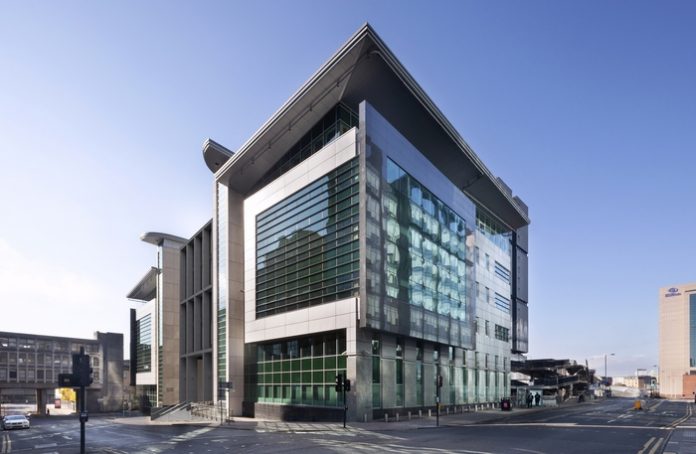Leading real estate advisor CBRE has released its latest figures on the office markets in Edinburgh and Glasgow, revealing a positive start to 2020 following the end of sustained political uncertainty.
Stewart Taylor, head of CBRE’s Scottish office agency business, commented: “With the 2019 General Election and Brexit uncertainty out of the way and the election of a new government with a significant working majority, the early part of the year saw a palpable air of confidence returning to the Edinburgh and Glasgow business community, notwithstanding that a UK/EU trade deal has yet to be agreed.
“This has of course, been significantly impacted by the effects of the coronavirus pandemic which began to take hold at the end of the first quarter. While this injects substantial uncertainty into the market for an unknown period of time, we have received encouraging evidence from our colleagues in the Far East which suggests that their markets are recovering post-lockdown.
“Looking at Q1 activity prior to the disruption, we can see rising investment and a post-Brexit boost in business confidence gave way to increased demand for office space. However, occupiers are becoming increasingly selective, typically focusing their property searches on new Grade A space that is energy efficient and constructed from sustainable and recyclable materials to boost their Environmental, Social and Governance (ESG) credentials and attract and retain the brightest and the best talent.
“Poorly-located second-hand space with a high carbon footprint – much of which lacks wellness features such as high levels of natural light and balconies or roof terraces that offer a “freshair” experience – is being shunned by the more progressive employers as the link between quality of premises and employee recruitment, retention and productivity is increasingly recognised.
“However, the strategy adopted by many footloose tenants of focusing property searches on new Grade A, “sustainable” office buildings is becoming increasingly frustrated by the decline in availability of such space. The pipeline of new office developments reaching the market is at historic lows and this is reflected in the acutely low availability of new Grade A stock across Edinburgh and Glasgow.”
Edinburgh
Q1 take-up in Edinburgh saw a significant increase on the previous quarter – rising 35% to 130,640 sq ft. Although 32% below the five year average of 193,603 sq ft for Q1, this can be partly attributed to shortage of supply across the market which continues to squeeze headline rents and incentives.
There was 23,503 sq of Grade A city centre take-up across three deals, the most significant being the letting of 14,641 sq ft to Smartsheet at Quartermile 3. The largest city centre letting saw the Financial Conduct Authority (FCA) take 16,128 sq ft at Quayside House, while the largest deal of the quarter overall was the letting of 17,597 sq ft of space at Shawfair Park to People’s Energy.
Stewart Taylor, head of CBRE’s Scottish office agency business, commented: “2020 started strongly, with a significant increase in take-up on the final quarter of 2019. However, the final few weeks understandably saw a drop in lettings which affected the overall performance of the quarter. We are aware of a number of deals in Edinburgh which have been placed on hold due to the coronavirus pandemic, although the narrative is that these deals will be picked-up again after lockdown.”
“With development sites at a standstill, we are likely to see completion dates pushed back significantly as the labour and supply taps can’t simply be switched on again with the same pressure. The current shortage of Grade A stock is likely therefore to continue for longer than forecast at the start of the year. Even if demand levels take some time to fully recover, market dynamics suggest that there is unlikely to be any negative impact on rental levels.
“This is undoubtedly a challenging time, and the situation continues to evolve daily. Moving forward, we expect Q2 activity to be dominated by regears. However, while changes to working patterns may accelerate and technology is likely to play an ever increasing role, we don’t foresee a sea change in demand. When some form of new normality returns, transactions will still be driven by expiries and breaks and the question will simply be to what extent the wider economy has been impacted.”
Glasgow
Take-up for the Glasgow city centre office market was down on recent years at 89,388 sq ft for the first quarter of 2020.
The largest transaction to complete was insurance firm Sedgwick’s letting of 18,268 sq ft at Ardstone Capital’s Sentinel building. With a refurbishment scheme completing in Q4 2019, Sentinel is one of the few buildings capable of providing scale with 59,901 sq ft of available space. Sedgwick will move from their current office at 225 Bath Street, which they have occupied for 15 years.
Lettings in the creative industries sector included tech firms Continuity2 securing 10,000 sq ft at 34 Miller Street and Class4Kids taking 7,844 sq ft at 180 West George Street, while public sector deals saw Skills Development Scotland occupying 6,400 sq ft at Monteith House.
The drop in deals and take-up is not solely based on coronavirus and can be partly attributed to the lack of Grade A supply in the city, which continues to restrict larger transactions. With only 6,000 sq ft of Grade A space, representing an availability rate of 0.04%, occupiers are having to consider pre-let opportunities at key developments under construction. New build Grade A developments like 2 Atlantic Square, due to complete in 2020, and 177 Bothwell Street in summer 2021, will now be delayed due to the current restrictions. This will however, be improved with the completion of a fully refurbished 55 Douglas Street, due for completion in Q2 2020.
Total supply within the city has fallen and now sits at 1,060,982 sq ft, down nearly 13% from Q1 2019. With stock sitting at just over 13.4m, the Glasgow city centre office market currently has an availability rate of just 7.9%.
Alistair Urquhart, a director at CBRE in Glasgow commented: “The shortage of Grade A availability continues to affect Glasgow’s office market. Prior to COVID-19, the underlying demand for prime office space in the city remained strong and we have yet to understand the full impact. However, the inevitable delays to the development pipeline will result in further constraints on supply, especially for larger occupiers, who already have limited options available to them.
“The large Grade A deals that have come to define Glasgow over the past few years have somewhat stalled, and there is real pressure now on landlords to bring forward new development. Therefore, we are likely to see the continuation of large pre-lets throughout 2020, which will help compensate for the short-term decrease of small to medium sized lettings.
“Moreover, with the lack of new supply being launched to the market at the moment, it is unlikely the short-term drop in demand will result in a drastic increase of the availability rate in the short term. This should however, put positive pressure on rents within the city and we expect both prime and secondary rates on office space of a significant size to continue to grow.”
Despite the restrictions imposed by the current lockdown, CBRE is continuing to work with clients to market their assets, using the latest technology to carry out virtual viewings.
Alistair Urquhart added: “For the duration of the lockdown period, we are able to offer certain clients use of our in-house visualisation tool, Floored Plans. This allows us to showcase a space using interactive 2D and immersive 3D views, with the possibility to alter the layout during virtual tours with instant results. We can take requirements such as headcount, open space and actual useable square footage into consideration to help potential occupiers with the decision-making process. This technology is a great way to ensure prospective tenants are still looking at our clients’ properties and we will continue to offer it to clients free of charge until physical tours become possible again.”



















